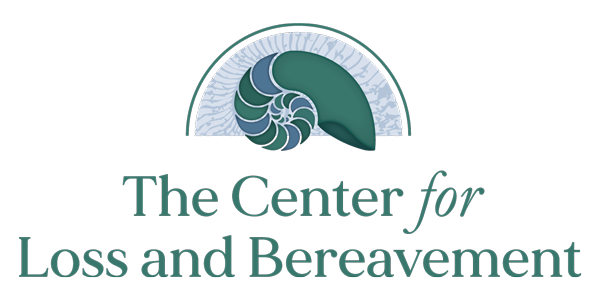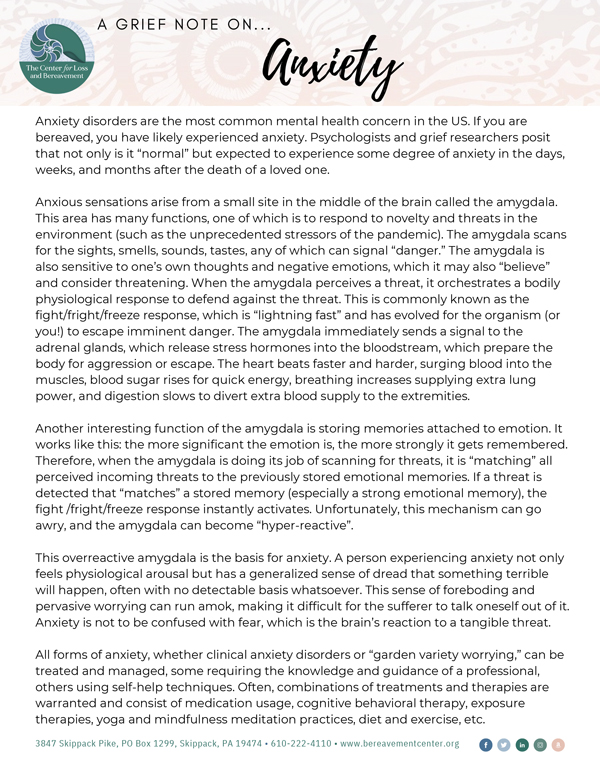CLB Grief Notes
A Grief Note On…
Anxiety
Anxiety disorders are the most common mental health concern in the US. If you are bereaved, you have likely experienced anxiety. Psychologists and grief researchers posit that not only is it “normal” but expected to experience some degree of anxiety in the days, weeks, and months after the death of a loved one.
Anxious sensations arise from a small site in the middle of the brain called the amygdala. This area has many functions, one of which is to respond to novelty and threats in the environment (such as the unprecedented stressors of the pandemic). The amygdala scans for the sights, smells, sounds, tastes, any of which can signal “danger.” The amygdala is also sensitive to one’s own thoughts and negative emotions, which it may also “believe” and consider threatening. When the amygdala perceives a threat, it orchestrates a bodily physiological response to defend against the threat. This is commonly known as the fight/fright/freeze response, which is “lightning fast” and has evolved for the organism (or you!) to escape imminent danger. The amygdala immediately sends a signal to the adrenal glands, which release stress hormones into the bloodstream, which prepare the body for aggression or escape. The heart beats faster and harder, surging blood into the muscles, blood sugar rises for quick energy, breathing increases supplying extra lung power, and digestion slows to divert extra blood supply to the extremities.
Another interesting function of the amygdala is storing memories attached to emotion. It works like this: the more significant the emotion is, the more strongly it gets remembered. Therefore, when the amygdala is doing its job of scanning for threats, it is “matching” all perceived incoming threats to the previously stored emotional memories. If a threat is detected that “matches” a stored memory (especially a strong emotional memory), the fight /fright/freeze response instantly activates. Unfortunately, this mechanism can go awry, and the amygdala can become “hyper-reactive”.
This overreactive amygdala is the basis for anxiety. A person experiencing anxiety not only feels physiological arousal but has a generalized sense of dread that something terrible will happen, often with no detectable basis whatsoever. This sense of foreboding and pervasive worrying can run amok, making it difficult for the sufferer to talk oneself out of it. Anxiety is not to be confused with fear, which is the brain’s reaction to a tangible threat.
All forms of anxiety, whether clinical anxiety disorders or “garden variety worrying,” can be treated and managed, some requiring the knowledge and guidance of a professional, others using self-help techniques. Often, combinations of treatments and therapies are warranted and consist of medication usage, cognitive behavioral therapy, exposure therapies, yoga and mindfulness meditation practices, diet and exercise, etc.
Join Our
Mailing List
Donate
Today
Request
Information

Affiliations
• NACG
• CBEM Changemaker
• ADEC
• Charity Navigator
Quick Links
About Us
Individual & Family Grief Counseling
Volunteer
News
Grief Support Resources
Contact
Ph: 610-222-4110
Fax: 610-222-4116
3847 Skippack Pike
P.O. Box 1299
Skippack, PA 19474
Support The Center For
Loss and Bereavement
